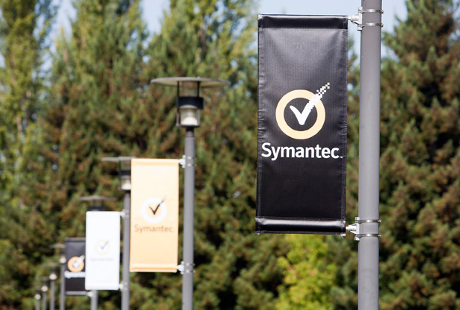Information security vendor Symantec is not a company afraid to counter-attack. In May, it launched a legal bid to delay the release of Microsoft’s next generation operating system – Vista – which Symantec executives claim incorporates technology it owns, thanks to the 2005 acquisition of Veritas and its Volume Manager product.
The fact the move coincided with the launch of Microsoft OneCare, a security package designed to cut Symantec off at the knees in the consumer market was not lost on observers. Whatever the fallout of that battle between Microsoft’s OneCare and Symantec’s new Norton 360 product lines, it is in the enterprise that the decisive fight will take place.
Following the injection of enterprise credibility that the Veritas buyout brought with it, Symantec CEO John Thompson initially pitched that this combination could better provide all-round “information integrity”. But a year on at the Symantec Vision user conference in San Francisco, it was time for him to produce hard evidence.
Evidence of such is the Symantec Data Centre Foundation, a management platform sporting capabilities for controlling all levels of storage assets from a single console. The Foundation is also the basis for the future proposed tight integration between Symantec’s security and storage software.
The benefits for its enterprise customers will be “a standard operating environment across the entire data centre,” says Kris Hagerman, president for data centre management, enabling users to exert greater control. Other storage vendors only provide management tools for their own systems, he says. “There’s only one way to get a single view across all your existing servers and operating systems – and we’re it.”
“There's only one way to get a single view across all your existing servers and operating systems – and we're it.”
Kris Hagerman, Symantec
But the absence of one critical piece will impede its ability to deliver on that promise: an enterprise-class identity management product. “We’d love to have [identity] authentication capabilities in our portfolio but we’re not going to do it if it’s not market-leading and if it doesn’t tie into a broader solution,” says Thompson. “We can’t do it all.”
Its reluctance to acquire in that area may seem curious for a company that has made 25 acquisitions in six years. But some observers believe that Symantec’s unwillingness to make an identity management acquisition is a tacit acknowledgement that Veritas is still proving a difficult to digest.
That deal faced strong criticism when it was announced. At the time, Wall Street did not buy into the logic that the storage and security services markets were converging. Moreover, a year after the deal was completed auditors discovered Symantec had inherited a $1 billion tax bill as a result. But worst of all, the company’s stock price is still trading at around half its pre-merger level.
In Symantec’s defence, sales for security and storage products have been growing at rates of 13% and 6% respectively. But this cannot hide structural weaknesses within the company, say Forrester analysts Thomas Raschke and Bill Nagel. A recent report of theirs on the company noted that the acquisitions are proving tough to integrate, both in terms of technology and channels to market.
Given that, it is unlikely that Thompson has the appetite for further expansion through acquisition.










